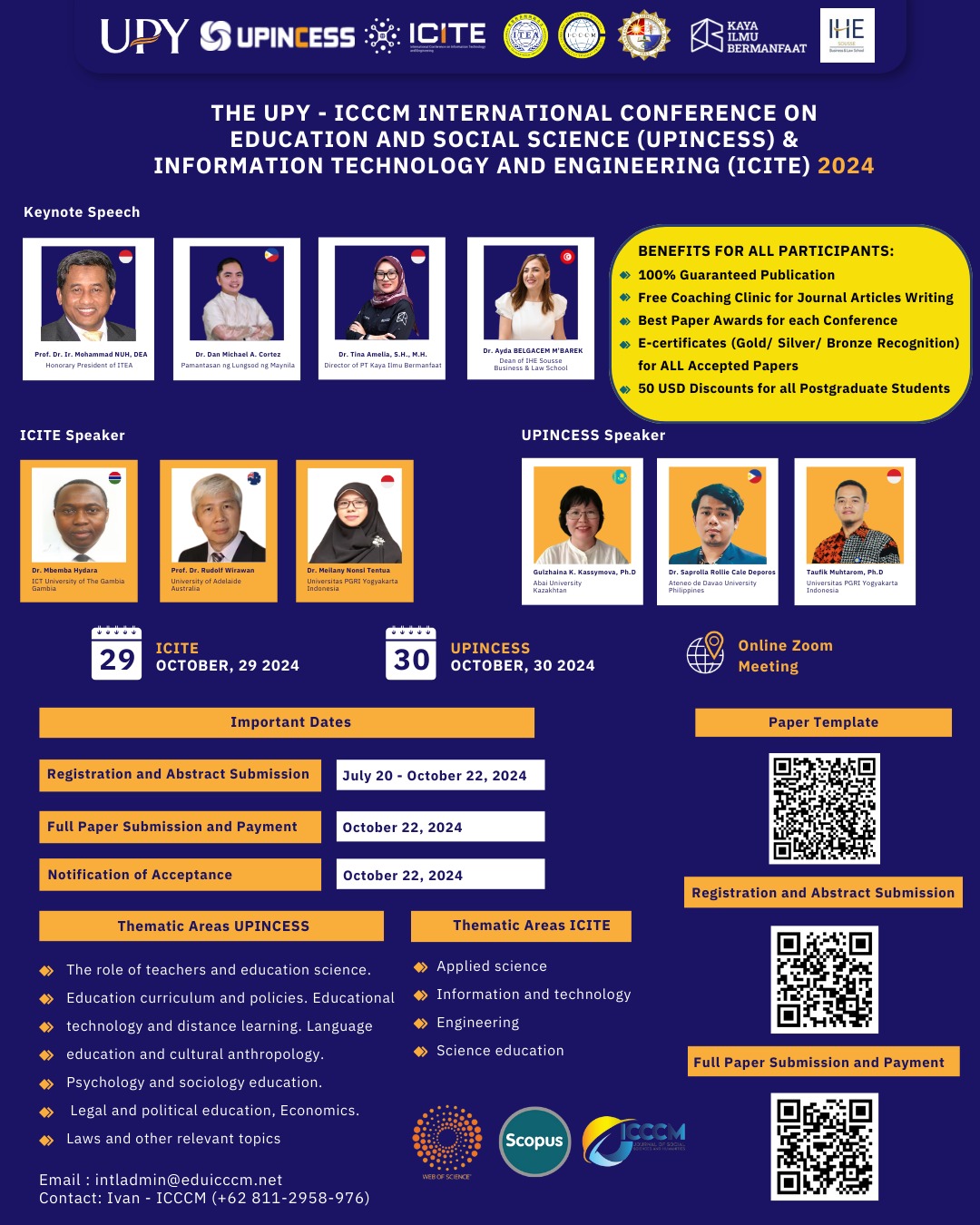Analysis of Misconceptions on Learning Geometry for Second-Grade Primary School Pupils
DOI:
https://doi.org/10.53797/icccmjssh.v1i3.1.2022Keywords:
Misconceptions, Learning Geometry, Second-Grade Pupils, Primary SchoolAbstract
The aim of this study is to identify the weaknesses of second-grade primary school pupils in learning Geometry topic. Based on the Mathematics Standard-Based Curriculum for Primary School, the Geometry topic consists of three content standards which are three-dimensional shapes, two-dimensional shapes and problem solving. Numerous studies have found that pupils have difficulties in learning geometry and lack of basic skills in mathematics. Thus, to fulfil this aim, a questionnaire was developed and administered to 30 pupils of Kerian District Primary School and supported by interview with three primary school teachers. The questionnaire data were analysed using the Statistical Package for Social Sciences and the results of the interviews will be analysed using ATLAS.ti. The results of this study revealed that the second-grade primary school pupils have several misconceptions especially on understanding the concept of three-dimensional shapes. It is believed that this study will help teachers develop and provide appropriate teaching and learning aids for pupils to improve their geometry understanding.
Downloads
References
Aktaş, M. C., & Aktaş, Y. D. (2012) Investigating High School Students’ Attitudes Towards Geometry According to Different Variables: Sample of Ordu City. Dicle University Journal of Ziya Gökalp, 18, 156–167.
Berliner, D. C. (2014). Describing the Behaviour and Documenting the Accomplishments of Expert Teachers. Bulletin of Science, Technology and Society, 24(3), 200–212. https://doi.org/10.1177/0270467604265535
Berna, C. G. (2014). An Investigation of Pre-Service Elementary School Teachers’ Knowledge Concerning Quadrilaterals. Gukurova University Faculty of Education Journal, 43(2), 137–154.
Cohen, L., Manion, L., & Morrison K. (2017). Research Methods in Education (8th Ed.). London: Routledge. https://doi.org/10.4324/9781315456539
Creswell, J. W., & Plano Clark, V. L. (2011). Designing and Conducting Mixed Methods Research (2nd Ed.). CA: Sage.
Gay, L. R., Mills, G. E., & Airasian, P. W. (2012). Educational Research: Competencies for Analysis and Applications (10th Ed). Pearson.
Gunčaga, J., & Žilková, K. (2019). Visualization as a Method for the Development of the Term Rectangle for Pupils in Primary School. European Journal of Contemporary Education, 8(1), 52–68. https://doi.org/10.13187/ejced.2019.1.52
Hiebert, J., Miller, E., & Berk, D. (2017). Relationships between Mathematics Teacher Preparation and Graduates’ Analyses of Classroom Teaching. Elementary School Journal, 117(4), 687–707. https://doi.org/10.1086/691685
Ibili, E., Çat, M., Resnyansky, D., Şahin, S., & Billinghurst, M. (2019). An Assessment of Geometry Teaching Supported with Augmented Reality Teaching Materials to Enhance Students’ 3D Geometry Thinking Skills. International Journal of Mathematical Education in Science and Technology, 51(2), 224–246. https://doi.org/10.1080/0020739X.2019.1583382
Ismail, H., Abdullah, A. H., Syuhada, N. & Noh, N. H. (2020). Investigating Student’s Learning Difficulties in Shape and Space Topic: A Case Study. International Journal of Psychosocial Rehabilitation, 24(5), 5315–5321. https://doi.org/10.37200/ijpr/v24i5/pr2020238337–351
Lee Abdullah, M., & Wei, L. (2017). Learning Form One Geometry: Validity and Reliability of a Self-Evaluation Instrument. Malaysian Journal of Learning and Instruction, 14(1), 211–265. https://doi.org/10.32890/mjli2017.14.1.9
Luneta, K., & Makonye, P. J. (2010). Analysing Grade 12 Learner Errors and the Misconceptions in Calculus. Acta Didactica Napocensia, 3(3), 35–46.
Mackle, K. (2016). Tackling Misconceptions in Primary Mathematics: Preventing, Identifying and Addressing Children’s Errors (1st ed.). London: Routledge. https://doi.org/10.4324/9781315695570
Marchis, I. (2012). Pre-Service Primary School Teachers’ Elementary Geometry Knowledge. Acta Didactica Napocensia, 5(2), 33-40.
Ministry of Education Malaysia (2016). Primary School Standard Curriculum Standard Document for Curriculum and Assessment: Year Two Mathematics. Kuala Lumpur: Curriculum Development Division.
Özerem, A. (2012). Misconceptions in Geometry and Suggested Solutions for Seventh Grade Students. Procedia - Social and Behavioral Sciences, 55, 720–729. https://doi.org/10.1016/j.sbspro.2012.09.557
Prabowo, A., Anggoro, R. P., Astuti, D., & Fahmi, S. (2017). Interactive Multimedia Based Teaching Material for Dimensional Geometry. Journal of Physics: Conference Series, 943, 2. https://doi.org/10.1088/17426596/943/1/012047
Serin, H. (2018). Perspectives on the Teaching of Geometry: Teaching and Learning Methods. Journal of Education and Training, 5(1), 1. https://doi.org/10.5296/jet.v5i1.12115
Serin, H. (2018). A Comparison of Teacher-Centered and Student-Centered Approaches in Educational Settings. International Journal of Social Sciences & Educational Studies, 5(1), 164–167. https://doi.org/10.23918/ijsses.v5i1p164
Sujarwo, M., Kurniawan, S. B. (2020). Analysis on Mathematics Learning Misconceptions of the Second-Grade Students of Elementary School in Addition and Subtraction Integer Topics. Advances in Social Science, Education and Humanities Research, 397, 757–764. https://doi.org/10.2991/assehr.k.200129.095
Downloads
Published
How to Cite
Issue
Section
License
Copyright (c) 2022 Mohamad Basri Nadzeri, Cheng Meng Chew, Irwan Mahazir Ismail

This work is licensed under a Creative Commons Attribution-NonCommercial-ShareAlike 4.0 International License.




